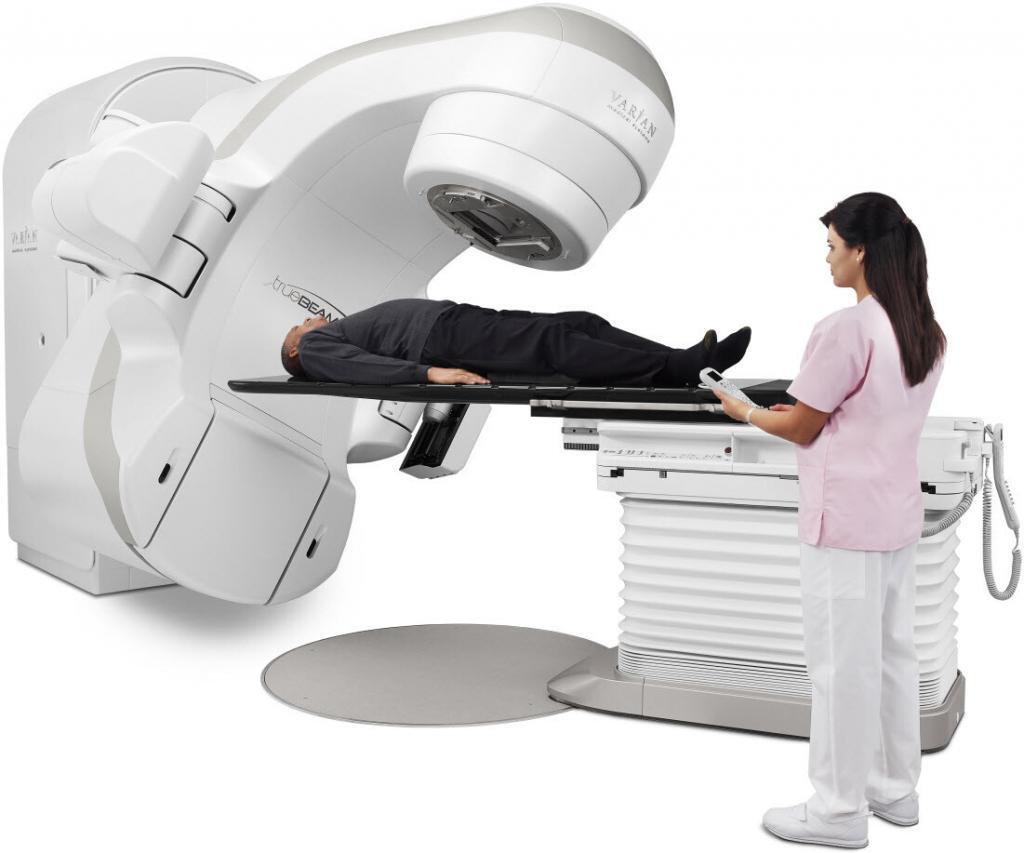Radiation Therapy
At low doses of radiation, cells can repair themselves. At high doses, radiation can cause mutations in cells that can affect their health and potentially cause cancer. In radiation therapy, an extremely high dose damages only the targeted cells, so those cells can no longer reproduce, and they are destroyed.
Cancer cells are more sensitive to radiation because they grow and reproduce faster than normal cells (which is what cancer is, an uncontrolled growth). Because cancer cells grow very quickly, it is possible to give them a lethal dose while sparing the nearby healthy tissue. As well, cancer cells often have ineffective repair mechanisms, so an amount of radiation damage that a normal cell would ordinarily recover from will usually destroy a cancer cell.
Radiation therapy employs three primary techniques to target and destroy cancer cells.
- External beam radiation therapy uses a strong source of radiation (such as cobalt-60 or a machine called a linear accelerator) to deliver intense doses to the tumour from the outside. Beamed from multiple angles, the radiation dose is carefully shaped to match the contour of the targeted tissue, thereby limiting the radiation dose to healthy tissue. The use of cobalt-60 for radiation therapy was pioneered in Canada in 1951 by Sylvia Fedoruk, Harold E. Johns and Roy Errington.
- Injections are typically used to treat thyroid cancers or other thyroid conditions by administering iodine-131, which naturally concentrates in the thyroid gland like iodized salt.
- Implantation (also called brachytherapy) involves the surgical implantation of radioactive sources. This can be done temporarily by catheter with several treatments over a series of hours or days, or permanently by leaving the radioactive sources to decay naturally within the tumour. Though invasive, this is also a highly effective method of radiation therapy.
Canadian researchers have contributed to the ability to focus radiation to kill cancer cells while leaving healthy cells unaffected.


